Agriculture
From the very start, Watanabe’s indigo cultivation focuses on soil health by using organic compost. During cultivation, no herbicides or insecticides are used, preserving soil vitality and increasing fertility. This encourages a rich ecosystem in the fields and helps suppress pests and diseases.
The indigo grown here is nurtured by the blessings of nature, the local land, and the strong community connections with everyone involved — resulting in a powerful, deep blue color.
Harvest takes place in midsummer, followed by a process called aikonashi (selection of leaves and stems), and the indigo leaves are dried under the sun.
September – February: Soil Preparation
The fertilizer spread on the indigo fields is fully matured compost produced at Nouda Co., Ltd.’s pig farm, a close partner of Watanabe’s.
The compost is made from manure and urine of “Kintoki pigs” that are fed with off-spec Naruto Kintoki sweet potatoes — a specialty product of Tokushima Prefecture.
This mature compost, rich in beneficial microorganisms and so active it steams even in winter, is returned to local farmland in a sustainable cycle, enriching the soil of Watanabe’s indigo fields.
 "Kintoki Buta pig"
|
 "Fermenting manure to produce compost." "Fermenting manure to produce compost." |
 "Soil tilling" |
March – April: Sowing Seeds and Nurturing Seedlings
To encourage thick, strong stems and well-developed roots, we carefully adjust the timing and amount of watering.
The seedling environment varies greatly depending on the day’s temperature and humidity.
 "Seedlings"
|
 "Fully grown seedlings" "Fully grown seedlings" |
May – June: Transplanting Seedlings to the Field
To ensure smooth root establishment and early growth, seedlings are transplanted just before it rains.
There is a remarkable difference in growth between natural rainfall and artificial watering.
 "Transplanting (seedlings)" "Transplanting (seedlings)" |
May – July: Removing Weeds
We use a combination of a cultivator and a sorigana (weed blade) to weed between rows and around the plants.
Checking the weather forecast is essential to ensure efficient and effective weeding.
 "Indigo plants ready for harvest" "Indigo plants ready for harvest" |
 "Harvest" "Harvest" |
 "Bunched indigo plants" "Bunched indigo plants" |
 "Sorting workspace" "Sorting workspace" |
June – August: Harvesting the Indigo Plants
Careful attention is paid to harvesting at the optimal time.
The higher the quality of the harvested indigo leaves, the better the resulting sukumo (fermented indigo).
 "Aikonashi (Sorting and removing stems from indigo leaves)" "Aikonashi (Sorting and removing stems from indigo leaves)" |
 "Indigo leaves" "Indigo leaves" |
 "Sun drying" "Sun drying" |
 "Dried indigo leaves" "Dried indigo leaves" |
June – August: Sorting and Drying the Leaves and Stems (Aikonashi)
To achieve a balanced ratio of indigo leaves and stems, the sorting process is carefully adjusted.
During sun drying, the leaves are regularly turned to prevent them from sticking together and forming clumps.
 "Indigo flowers" "Indigo flowers" |
 "Seed harvesting period" "Seed harvesting period" |
 "Indigo plant seeds" "Indigo plant seeds" |
December: Collecting Indigo Seeds
As daylight hours begin to shorten toward the end of summer, tade-ai (indigo plants) eventually bloom. These flowers then form seeds, which are harvested in December.
The collected seeds are used for the following year’s cultivation — starting a new cycle of indigo blue all over again.
 "Himiko" "Himiko" |
Watanabe's
2024 — This summer brought intense and prolonged heat, but thanks to the rain that fell at regular intervals, our indigo grew stronger than we ever expected.
Despite the exhaustion from the relentless heat and the challenges of sudden, heavy rainfall caused by linear rainbands, we worked together as a team and successfully harvested high-quality indigo leaves.
We offer our heartfelt thanks to everyone on the team and to all those who supported us.



